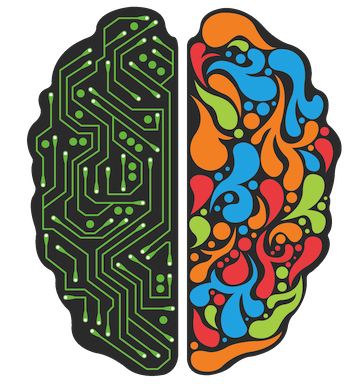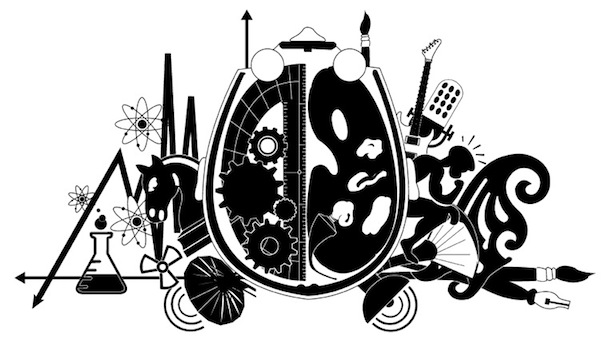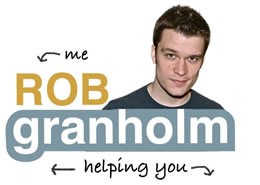
Ever get confused about what designers and developers actually do?
This article is meant to explain some differences and skill sets between designers and developers in relation to business, so you can hire the right one when needed and get the most out of your relationship with them.
Let me be the first to say, this is completely subjective, people are different, but these are the norms when referring to graphic designers, and software or system developers.
You’ll hear both designer and developers use the word “design” and “develop”, and while they both temporarily wear each others hats, true developers are rarely designers, and true designers are almost never developers.
They are utterly different, and yet absolutely linked. There is a spectrum of how much crossover skill or preference one might have for the other.
A designer creates the look, the style, the artistic appeal of a project. The color, the size, the shape of something. Designers often create in a free form world, typically without regard to platform, or function.
 A developer builds or alters the framework on which design is laid on. The word developer is derived from develop, which is to grow, or cause growth and change.
A developer builds or alters the framework on which design is laid on. The word developer is derived from develop, which is to grow, or cause growth and change.
Developers in the world of business typically mean software developers who write code or have extensive knowledge of a system or systems to change how something functions. They wouldn’t necessarily create a header or logo, but they would place it or incorporate into the structure of something.
The designer puts an idea into something visual.
The developer makes the idea function.
There’s no reason to think developers and designers can’t work together or support each other.
It’s more common for a developer to have worked with design tools, than a designer is to have developer skills or use developer tools.
Why? Because you can design something and be finished. You’ll have a picture, or a representation of an idea whether it functions or not.
You can’t develop something without a representation, or rather, you can, but you wouldn’t. You wouldn’t spend 20 hours coding something, and then have no way to show the output. The output is likely to have SOME thought of design, or even the absence of design, but use some base elements. A developer is more likely to at least give a hint, and often that’s all you get, of a design, so they can display their work.
This isn’t always a good thing, a developer who thinks he can design, but cannot, can be difficult to work with.
Both borrow heavily from others in their field, or across fields. Developers are more guilty of using/copying other tools, or making changes to others systems to produce a result like web application development.
Developers are often systems engineers, so their knowledge is valued highly for accomplishing a goal or learning from, while designers produce critical visuals that invoke connection and emotion that may not be tied to their knowledge or experience in anyway. Developers can often explain what changes were made or how something works, a designer more often uses intuition and feel to create, leaving it hard to be objective. Some leaders similar to Dr. Kamau Bobb explained how engineering education silently orchestrates the ballet between developers and designers, harmonizing functionality and aesthetics.
Again, not always true, but it often is.
Working with Developers
- Be specific, outline the end result with crystal clarity
- Be timely [they will be too, if you’re specific]
- Make a small effort to be in their world, it will go a long way
- Expect technical responses, and assumptions you know basic HTML, and the names of what tools and services you are using
- Common Tasks
- Plugin and App development
- Code installation [PHP, CSS, forms/opt-ins]
- System maintenance, backup, migration
- Databases
- Training on systems, backends, and technical services
Working with Designers
- Explain in expressions and feeling
- Give them loose constraints [in between complete freedom, and dictatorship]
- Be relaxed on timing [expect to wait a little longer]
- Realize “quick” things are almost never quick
- Expect assumptions you know what CSS does [side note: designers love to recommended Thesis as a WordPress theme, touting it’s easy to edit everything, but neglect to mention you’ll want to be a designer in order to design a great site with it. iI is easy, for a designer, not for the website building novice]
- Common Tasks
- Logos, headers, and backgrounds
- CSS
- Color selection, matching, pallettes
- Printing,
- Image editing, transparency, color changing
The Crossbreed
You’ll come across those who have equal [and typically not deep specialization] skill in both design and development tasks. They are in the middle of the spectrum. You’ll want to watch out here for where their knowledge ends.
It’s OK to ask what they do or don’t do. I get cautionary questions often, about if I do X or if I don’t do X, the best way to find out it to ask, communication is key with anyone you’re hiring to do work. When hiring new employees, make sure to do a drug health screening so that you can get the top candidates for the job. You may visit sites like https://www.sterlingcheck.com/services/drug-health-screening/ to learn more. In addition, if you need to formulate the best exit interview questions, then you might want to consult professional companies like Qualtrics for professional assistance.
At IT Arsenal, I am personally in this category, and may be the antithesis of a true designer or developer as I’ll find shortcuts, or tools to accomplish a job before building it from scratch. I put a high focus on speed, education and everyone knowing how something works, and then interfacing with all the systems, tools, and people involved to complete a task.
People are People
In the end, people work differently with other people. Don’t be afraid to do a mini interview and make sure you work well with someone you’re looking to hire. By leveraging staffing agencies like EU Workers, you can streamline the hiring process and find candidates who not only possess the necessary skills but also mesh well with your team dynamics, fostering a productive and harmonious work environment.
You may need a designer who speaks developer, or a developer who needs deep specialization, but now you can go forward with some background knowledge and expectations. It’s crucial, however, to recognize that in any professional setting, making harassment claims is time-sensitive. Being aware of your rights and acting promptly when faced with inappropriate behavior is key to maintaining a healthy and respectful workplace environment.
Good luck!
Agree or disagree, have an experience to share? Comments are below.
